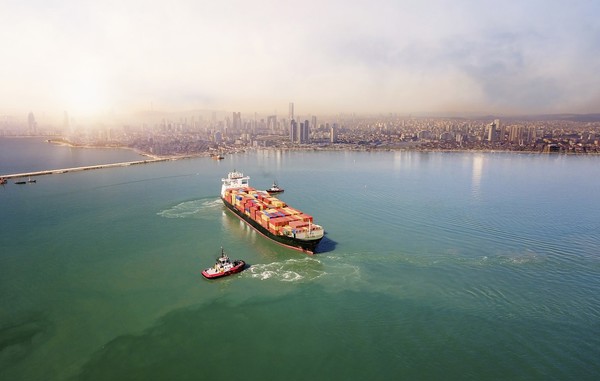GMF study says e-fuels demand to reach 600 million mt by 2050
An additional 2 terawatts (TW) of renewable electricity will be needed to meet the shipping demand for e-fuels by 2050, a Global Maritime Forum (GMF) study found.
 PHOTO: Aerial view of a cargo ship at sea. Getty Images
PHOTO: Aerial view of a cargo ship at sea. Getty Images
The GMF study, titled 'Green Jobs and Maritime Decarbonisation', is centered on the IMO’s target to reach net-zero greenhouse gas (GHG) emissions "by or around 2050".
Large volumes of zero- and near-zero-emission fuels will be needed to fulfil this demand, the GMF says. E-ammonia will make up a significant portion of this volume, amounting to around 450 million mt.
E-ammonia is produced using renewable electricity to generate hydrogen by splitting water through electrolysis. The hydrogen is then combined with nitrogen extracted from the air to produce e-ammonia.
The forum’s analysis draws on energy demand projections by the US-based sustainability research firm, the Rocky Mountain Institute (RMI).
The RMI estimates that e-fuel demand will scale to around 500 million mt by 2040 and 600 million mt by 2050. This will require an additional 2 TW of renewable electricity capacity by 2050 and an infrastructural investment of £3.2 trillion ($4.02 trillion) by 2050.
The projected e-fuel demand growth is based on the expectation that e-fuels will dominate the marine fuel mix, RMI states.
By Manjula Nair
Please get in touch with comments or additional info to news@engine.online





